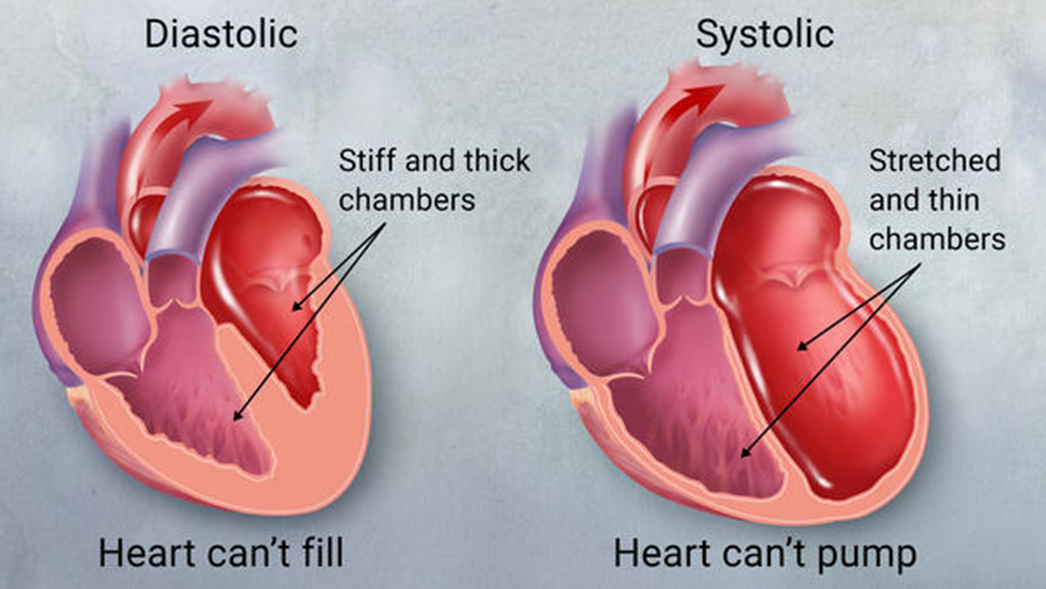A home health nurse is caring for an elderly client who has heart failure. Which of the following interventions on the tertiary level of prevention could be included in the care?
Reinforce past teachings on how to read food labels.
Review the daily weights the client has collected since the last home visit.
Remind the client to ask for the pneumococcal vaccine during their next provider appointment.
Auscultate the lungs and assess for edema.
The Correct Answer is B
Choice A Reason:
Reinforcing past teachings on how to read food labels is an important educational intervention. It helps the client make informed dietary choices, which can be crucial in managing heart failure. However, this intervention is more aligned with secondary prevention, which focuses on early detection and management of disease risk factors to prevent progression. Tertiary prevention, on the other hand, aims to manage and mitigate complications of an already established disease.
Choice B Reason:
Tertiary prevention focuses on managing and mitigating the effects of an existing disease to prevent complications and improve quality of life. In the context of heart failure, this involves monitoring and managing symptoms to prevent disease progression and hospitalizations. Reviewing the client's daily weights helps detect early signs of fluid retention, a common issue in heart failure, allowing for timely interventions.
Choice C Reason:
Reminding the client to ask for the pneumococcal vaccine during their next provider appointment is a preventive measure aimed at reducing the risk of infections, which can exacerbate heart failure. This intervention falls under primary prevention, as it aims to prevent the occurrence of a new health issue (pneumonia) rather than managing an existing condition.
Choice D Reason:
While assessing for edema is important in managing heart failure, it is more of a diagnostic activity rather than an intervention. Tertiary prevention involves interventions to manage and mitigate the effects of an existing disease.
Nursing Test Bank
Naxlex Comprehensive Predictor Exams
Related Questions
Correct Answer is B
Explanation
Choice A Reason:
A social worker consult can provide valuable resources and support for managing the care of a mentally ill parent. Social workers can assist with navigating healthcare systems, accessing community resources, and providing emotional support. However, this referral may not provide the immediate peer support and shared experiences that a support group offers. Social workers are excellent for long-term planning and resource management but may not address the immediate emotional needs as effectively as a support group.
Choice B Reason:
A support group is an ideal first-level support for someone feeling overwhelmed and exhausted from caregiving responsibilities. Support groups offer a space for individuals to share their experiences, receive emotional support, and learn coping strategies from others in similar situations. This peer support can be incredibly validating and comforting, helping the client feel less isolated and more understood. Support groups can provide immediate relief and practical advice, making them a highly effective initial referral.
Choice C Reason:
Referring the client to a psychiatrist is important for addressing any potential mental health issues, such as depression or anxiety, that may arise from the stress of caregiving. Psychiatrists can provide medication management and therapeutic interventions. However, this referral may not offer the immediate peer support and shared experiences that a support group provides. While psychiatric care is crucial, it may be more appropriate as a follow-up referral after addressing the client's immediate need for emotional support.
Choice D Reason:
A life coach can help individuals set goals, develop strategies for personal growth, and improve overall well-being. However, life coaching may not be the most appropriate referral for someone dealing with the specific emotional and practical challenges of caregiving for a mentally ill parent. Life coaches typically focus on personal development and achieving future goals, which may not address the immediate emotional support needs of the client.
Correct Answer is D
Explanation
Choice A Reason:
Local ordinances are important for shaping the built environment, as they dictate land use, zoning, and building codes. However, they are not a core feature of the built environment assessment tool itself. Instead, they are external factors that influence the built environment.
Choice B Reason:
Financial stability is crucial for the overall well-being of a community, but it is not a direct feature of the built environment assessment tool. Financial stability impacts the resources available for community development and maintenance but does not directly assess the physical environment.
Choice C Reason:
The community at large refers to the broader population and social dynamics within a community. While understanding the community is essential for comprehensive assessments, the built environment assessment tool focuses more on physical and infrastructural elements rather than social aspects.
Choice D Reason:
Walkability is a core feature of the built environment assessment tool. Walkability assesses how friendly an area is to walking, considering factors such as the presence of sidewalks, pedestrian crossings, and the proximity of amenities. High walkability is associated with numerous health benefits, including increased physical activity and reduced risk of chronic diseases. It is a critical component in evaluating the built environment's impact on community health.
Whether you are a student looking to ace your exams or a practicing nurse seeking to enhance your expertise , our nursing education contents will empower you with the confidence and competence to make a difference in the lives of patients and become a respected leader in the healthcare field.
Visit Naxlex, invest in your future and unlock endless possibilities with our unparalleled nursing education contents today
Report Wrong Answer on the Current Question
Do you disagree with the answer? If yes, what is your expected answer? Explain.
Kindly be descriptive with the issue you are facing.
